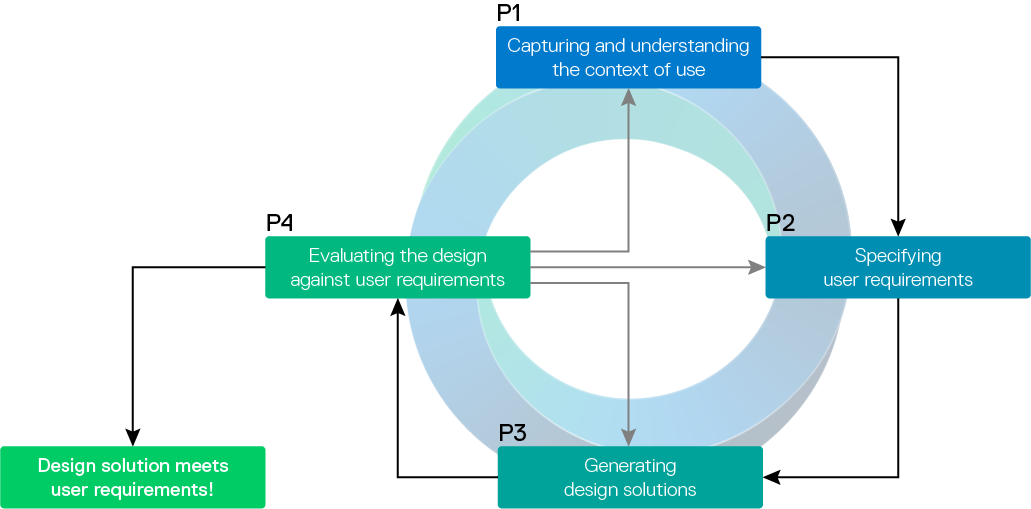
UX Engineering
User Experience (UX) encompasses all aspects of a user’s perception and interaction with a product — including usability, accessibility, aesthetics, emotional impact, and user satisfaction — across the entire usage context.
UX engineering in mechanical engineering enables more efficient development of user-centered products. Decades of experience in designing and creating HMI software, combined with rapid iterations, early user feedback, and close collaboration between customer, designer, and software developer, are key to success.
Since traditional UX design is often difficult to implement and costly and time-consuming in the mechanical engineering industry, we have developed two practical alternatives: Expert UX and Lean UX.

What is Expert UX?
For us, Expert UX Design means bringing together over 25 years of experience in designing complex user interfaces with deep technical understanding. We consciously rely on this expertise as the basis for decision-making — direct user surveys are therefore not necessary. The result is well-thought-out interfaces that are not only user-centered but also technologically precise — all while keeping development costs as low as possible.
What is Lean UX?
Lean UX is a user-centered approach to product development that combines rapid iterations with experience-based standardization to validate assumptions early and minimize risks. Unlike traditional UX methods, the focus in collaborating with users is on direct, pragmatic experiments rather than extensive documentation and lengthy development phases.

Why UX Engineering for the Mechanical Engineering Industry
Time to Market
UX engineering works with tested standards wherever possible and with customized solutions wherever necessary. Through continuous iteration and rapid prototyping, we enable early validation of concepts and ideas. This significantly reduces development time and accelerates the launch of new products in mechanical engineering.
Cost Reduction: Standards and Early Error Detection
In addition to using proven and tested alphagate standards, UX engineering helps test individual approaches and gather user feedback early. This allows design flaws and inefficient solutions to be identified and corrected more quickly. Expensive changes in later development stages can thus be avoided.
Greater User-Centeredness and Product Acceptance
UX engineering places great emphasis on incorporating user feedback as well as existing, quality-assured standards in the design process. This ensures that products are consistently aligned with the actual needs and expectations of end users. The result: machines and systems that perform better in practice and are better accepted by users.
Improved Collaboration and Transparency
Close collaboration among interdisciplinary teams — consisting of engineers, designers, and users — helps close communication gaps and speeds up decision-making. This transparency promotes a more agile, flexible way of working and improves coordination throughout the entire development process.
– Steve Jobs
Our Expertise for Your Projects
With over 25 years of experience in mechanical engineering and extensive expertise in UX design, we offer tailored solutions perfectly aligned with your specific requirements. In close collaboration with you, we bring your visions to life and develop solutions that meet both your needs and those of your customers.
UX Design Methods & Tools
The Human-Centered Design Process (HCDP): Combining Efficiency and User-Friendliness
In the mechanical engineering industry, efficiency and precision are essential. But what about the user-friendliness of your systems and machines? With the HCDP method (Human-Centered Design Process) we bring a user-centered perspective to your projects — ensuring that your products not only work but also inspire.
What is the Human-Centered Design Process (HCDP)?
HCDP is a methodical approach in UX design that places people at the center. By deeply understanding the needs, desires, and limitations of users, we develop solutions that are both intuitive and effective. The process is designed to be iterative and flexible to ensure that the final product meets the highest quality standards.

AI in the UX Process
To move through the process more efficiently and effectively and save valuable time on generic tasks, we use AI. This allows us to invest the saved time profitably in creative work, direct user contact, and testing. Your data is secure, as we work with our own tool, A-Gent, maintaining full control over all data flows and transfers.
Subscribe to our newsletter & never miss a thing!
Receive regular news, updates, and special offers straight to your inbox.